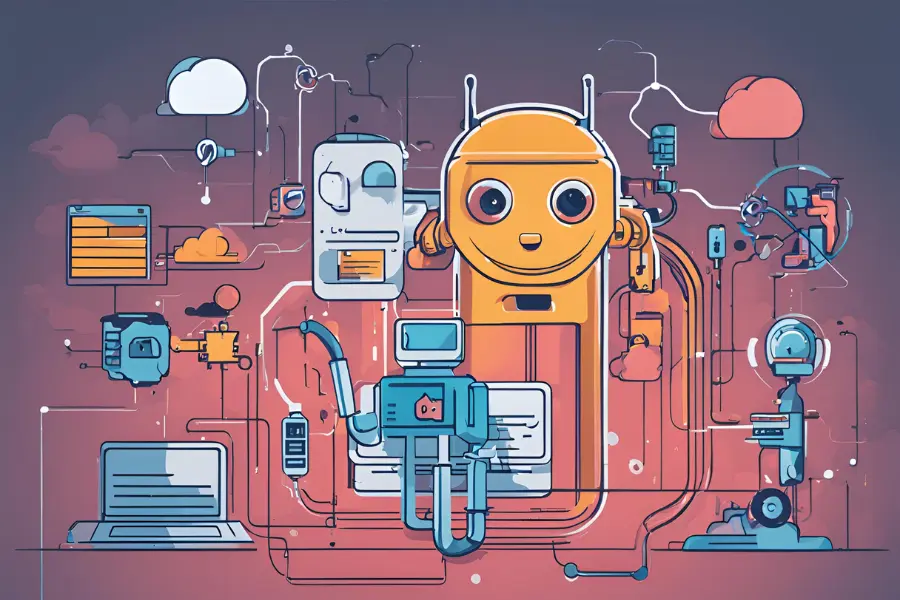JavaScript-Powered Chatbots: Next-Gen Integration Insights
Chatbots have become an integral part of modern digital interactions, enhancing customer service, streamlining processes, and providing personalised user experiences. JavaScript, with its versatile and robust nature, plays a crucial role in powering next-generation chatbots. This article delves into the insights of integrating JavaScript-powered chatbots, exploring their benefits, implementation strategies, and future potential.

1. The Power of JavaScript in Chatbots
JavaScript's ubiquity and flexibility make it an ideal choice for developing chatbots. It seamlessly integrates with web technologies, allowing developers to build interactive and responsive chatbot interfaces. JavaScript frameworks like Node.js provide a robust backend environment for handling real-time communication, making it possible to create sophisticated chatbots that can interact with users dynamically.
2. Benefits of JavaScript-Powered Chatbots
a. Real-Time Interaction
JavaScript excels in enabling real-time interactions, which are essential for chatbots. By leveraging WebSockets, developers can create chatbots that provide instant responses, enhancing user engagement and satisfaction.
b. Cross-Platform Compatibility
JavaScript chatbots can run across multiple platforms, including web browsers, mobile devices, and desktop applications. This cross-platform compatibility ensures a consistent user experience regardless of the device, broadening the reach of the chatbot.
c. Integration with APIs
JavaScript easily integrates with various APIs, allowing chatbots to access and utilise external data sources. This capability enables chatbots to perform complex tasks such as retrieving user information, processing transactions, and providing personalised recommendations.
d. Scalability
Node.js, a JavaScript runtime, is renowned for its scalability. It can handle numerous simultaneous connections efficiently, making it ideal for chatbots that need to manage high volumes of user interactions without performance degradation.
3. Implementation Strategies
a. Choosing the Right Framework
Several JavaScript frameworks and libraries can be used to develop chatbots. Node.js is a popular choice for the backend, while frameworks like Express.js can simplify the creation of RESTful APIs for the chatbot. For the frontend, React.js or Vue.js can be used to build interactive and responsive user interfaces.
b. Natural Language Processing (NLP)
Integrating Natural Language Processing (NLP) is crucial for creating intelligent chatbots that understand and process human language. JavaScript libraries such as nlp.js or services like Dialog Flow can be incorporated to enable NLP capabilities in the chatbot.
c. WebSocket Integration
For real-time communication, implementing WebSockets is essential. Libraries like Socket.IO provide an easy way to integrate WebSocket functionality, allowing the chatbot to receive and send messages instantaneously.
d. API Integration
To enhance the functionality of the chatbot, integrating with various APIs is vital. For instance, you can connect the chatbot to a CRM system to fetch customer data or to a weather API to provide weather updates. Using JavaScript's fetch API or Axios library makes it straightforward to handle HTTP requests and integrate external APIs.
4. Future Potential
a. Advanced AI and Machine Learning
The integration of advanced AI and machine learning algorithms will further enhance the capabilities of JavaScript-powered chatbots. These technologies will enable chatbots to learn from interactions, improving their responses and making them more intuitive over time.
b. Voice Recognition
Voice-activated chatbots are gaining traction, and JavaScript can play a pivotal role in their development. By integrating voice recognition APIs and libraries, developers can create chatbots that interact with users through voice commands, offering a hands-free experience.
c. Enhanced Personalization
With the increasing availability of user data, JavaScript-powered chatbots can offer more personalised experiences. By analysing user behaviour and preferences, chatbots can provide tailored responses and recommendations, significantly improving user satisfaction.
Active Events
Data Scientist Challenges One Should Avoid
Date: Feburary 25, 2025 | 7:00 PM (IST)
7:00 PM (IST) - 8:10 PM (IST)
2753 people have registered
3 Must Have Projects On your CV to Get into Data Analysis
Date: Feburary 25, 2025 | 7:00 PM(IST)
7:00 PM(IST) - 8:10 PM(IST)
2753 people registered
Bootcamps
Full Stack Software Development Bootcamp
- Duration:4 Months
- Start Date:Feb 9, 2025
Data Science Bootcamp
- Duration:4 Months
- Start Date:Feb 9, 2025
